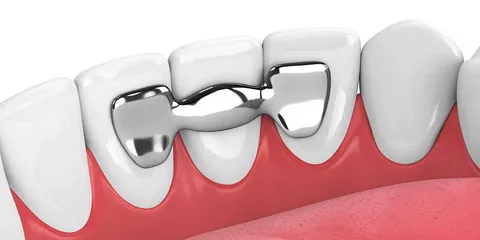Dental Bridges Without Insurance are a common solution for replacing missing teeth, restoring both function and aesthetics to your smile. However, the cost of dental bridges can be a concern for many individuals, particularly those without insurance coverage. In this comprehensive guide, we’ll delve into the various factors that influence the cost of dental bridges without insurance and explore strategies for managing expenses effectively.
Understanding Dental Bridges
Before discussing costs, it’s essential to understand what dental bridges are and how they work. A dental bridge is a prosthetic appliance used to replace one or more missing teeth. It consists of artificial teeth (pontics) that are anchored to adjacent natural teeth or dental implants, filling in the gap left by missing teeth.
Factors Influencing the Cost of Dental Bridges
Several factors can influence the cost of dental bridges, including:
1. Type of Bridge
There are different types of dental bridges available, including traditional bridges, cantilever bridges, and Maryland bridges. The type of bridge recommended by your dentist will affect the overall cost, with traditional bridges typically being the most expensive option.
2. Material Used
The material used to make the dental bridge can also impact its cost. Common materials include porcelain, ceramic, metal alloys, and composite resin. Porcelain and ceramic bridges tend to be more expensive due to their durability and natural appearance.
3. Complexity of the Procedure
The complexity of the dental bridge procedure can influence the cost, particularly if additional treatments such as tooth extractions or gum surgery are required. More complex cases may require specialized expertise and additional resources, resulting in higher expenses.
4. Dentist’s Fees
The fees charged by the dentist performing the procedure will also contribute to the overall cost of dental bridges. Experienced and reputable dentists may charge higher fees for their services, reflecting their expertise and the quality of care provided.
Average Cost of Dental Bridges Without Insurance
The cost of dental bridges without insurance coverage can vary widely depending on the factors mentioned above. On average, patients can expect to pay anywhere from $500 to $1,500 per tooth for a traditional dental bridge. However, this estimate may increase significantly for more complex cases or premium materials.
Managing Expenses Without Insurance Coverage
For individuals without dental insurance coverage, managing the cost of dental bridges can be challenging. However, there are several strategies you can employ to make treatment more affordable:
1. Explore Payment Plans
Many dental practices offer flexible payment plans or financing options to help patients manage the cost of treatment. Consider discussing payment options with your dentist to find a solution that fits your budget.
2. Seek Affordable Alternatives
If traditional dental bridges are beyond your budget, explore alternative treatment options such as removable partial dentures or implant-supported bridges. While these options may have their own pros and cons, they can be more cost-effective for some patients.
3. Research Discount Programs
Some dental discount programs or membership plans offer reduced fees for dental services, including bridges. Research available options in your area and inquire about potential savings opportunities.
4. Consider Dental Tourism
For individuals willing to travel, dental tourism can offer significant cost savings for dental procedures such as bridges. Research reputable dental clinics abroad and weigh the potential savings against the additional expenses associated with travel.
Conclusion
While the cost of dental bridges without insurance coverage can be significant, it’s essential not to overlook the long-term benefits of restoring your smile and dental function. By understanding the factors influencing costs and exploring strategies for managing expenses effectively, you can make informed decisions about your dental care and achieve a healthy, beautiful smile.

